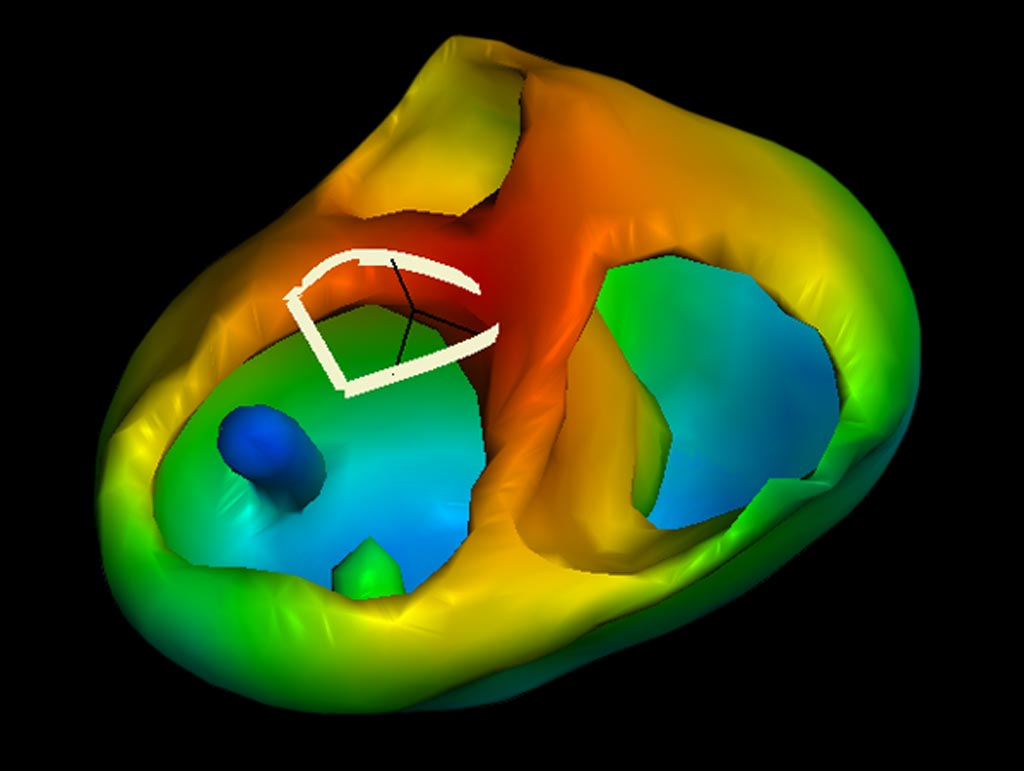Cardiac Imaging System Locates Arrhythmia Foci
By MedImaging International staff writers
Posted on 08 Jul 2019
A novel planning tool uses three-dimensional (3D) cardiac mapping to localize idiopathic ventricular arrhythmias in patients with structurally normal hearts.Posted on 08 Jul 2019
The Catheter Precision (Ledgewood, NJ, USA) VIVO (View into Ventricular Onset) system uses a hand-held 3D camera, proprietary software, magnetic resonance imaging (MRI) or a computed tomography (CT) scans, and a standard 12-lead electrocardiogram (ECG) to generate color-coded 3D mapping images of the patient’s heart that indicate the area of earliest activation. The precise location is used by combining data on ECG lead positions, a chest photograph, and relevant imaging data to determine the precise spatial relationships between structural cardiac locations.

Image: A three-dimensional cardiac model generated from a photograph, ECG selection, and imaging scan (Photo courtesy of Catheter Precision).
The technology is based on computational models that identify to relationship of ECG electrodes with respect to the spatial orientation to the heart, as the potential generated by an activation front depends on the solid angle subtended by that front at an electrode location. The solid angle is comparable to a triangulated 3D view cone. The proximity of the wave front determines largely the solid angle; distant wave fronts have smaller solid angles compared to wave fronts in close proximity to the electrode. Thus, electrodes on the lateral side of the chest have different solid angles on a particular wave front than electrodes near the sternum, which are at near right angle views.
“VIVO uses a proprietary algorithm based on proven electrophysiology principles to generate an accurate 3D model of the heart with a superimposed electrical activation map,” said Steve Adler, CEO of Catheter Precision. “These 3D maps help physicians pinpoint the sites of origin for certain types of rhythm disorders. It's a major advance in cardiac electrophysiology, plus it is a significant milestone in the history of Catheter Precision.”
“VIVO is an important advance for patients who may require a cardiac ablation to better understand their irregular heart rhythms. It is easy to use, fits into our standard workflow, and is not invasive,” said Hari Tandri, MD, of Johns Hopkins University Hospital (Baltimore, MD, USA). “My experience with the VIVO to date has shown it to be an accurate, easy-to-use system that has the potential to significantly improve 3D cardiac mapping technology for ventricular arrhythmia mapping.”
Related Links:
Catheter Precision














